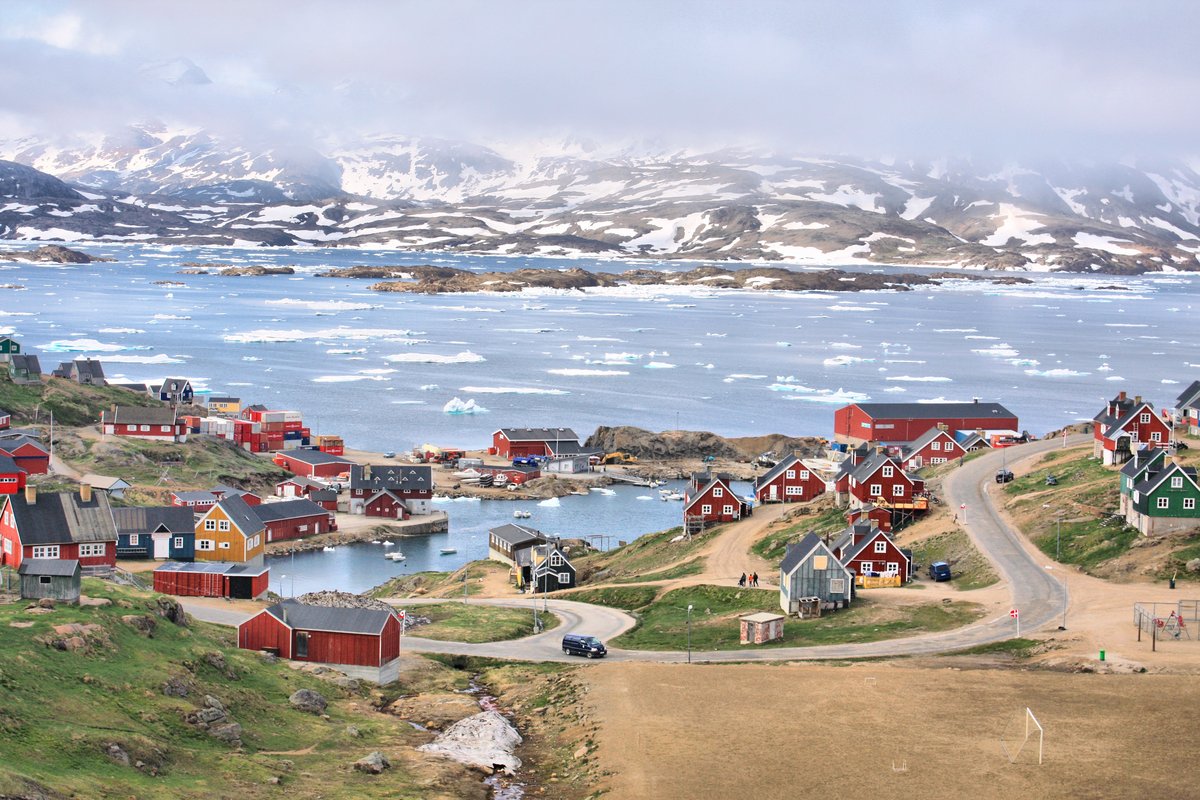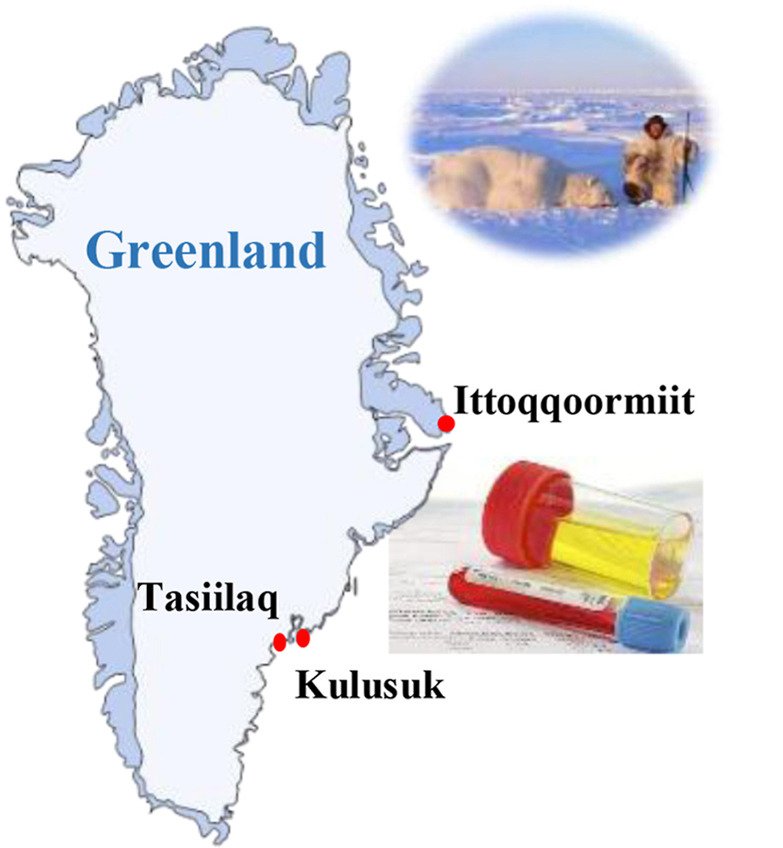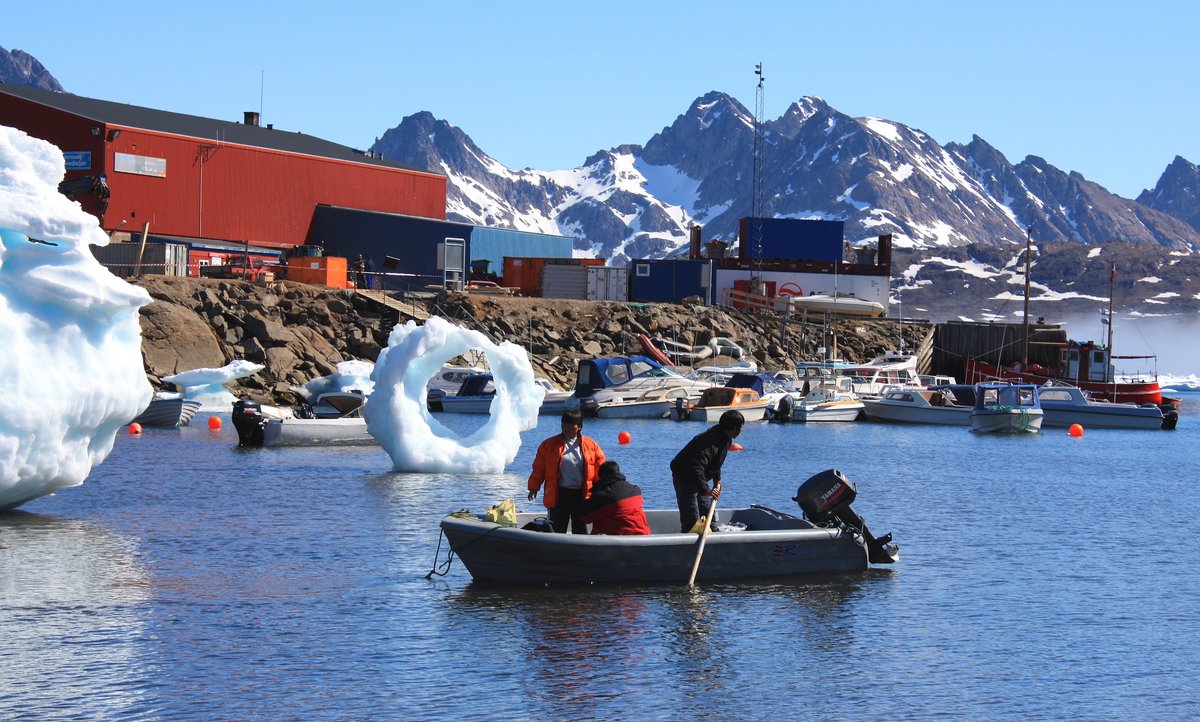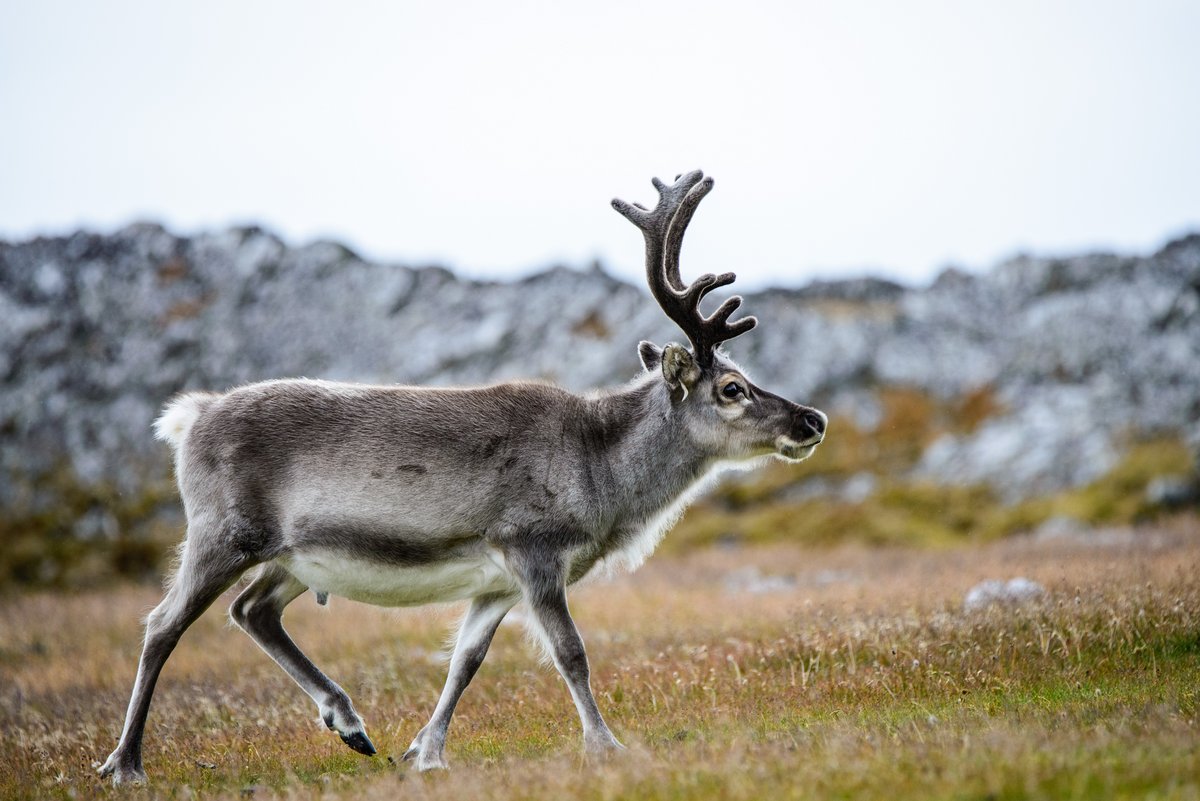East Greenlanders have large amounts of environmental toxins in their bodies: They get poisoned through their food
Especially those who eat polar bears, seals, and whales have elevated levels of toxins in their blood, new research shows.

Every second, the Gulf Stream pushes more than 150 million cubic liters of warm water from the Caribbean Sea northwards. The warm water flows south of Iceland and into the North Sea, where it keeps the climate mild and wet in the surrounding countries.
The Gulf stream makes a u-turn somewhere north of Iceland and flows back down along the east coast of Greenland. Now the water is no longer warm, but has cooled down. But cold water is not the only thing the stream carries with it.
Minuscule animals and algae that have absorbed toxins, which are discharged into the sea from the industry in the USA and parts of Europe, are carried by the stream. Here they get eaten by fish, which in turn are consumed by seals and whales. And last but not least, the seals are devoured by polar bears.
When the East Greenland hunters shoot and eat polar bears, seals, and whales, they therefore get large amounts of these environmental toxins into their bodies.

According to new research, East Greenlanders have some of the highest levels of environmental toxins in the world. And for some of the substances, it seems to be getting worse and worse, explains Eva Bonefeld-Jørgensen, who is a professor at the Department of Public Health at Aarhus University and one of the researchers behind the study.
- The good news is that we can see that regulation works. For example, the level of PCB has dropped significantly after it was phased out. On the other hand, in the PFAS group of chemicals, only a few out of several thousand substances have been regulated, she says and continues:
- In general, the population in East Greenland has a greater concentration of many of these substances in the body than people on the west coast of Greenland and in Denmark. What precise health effects the toxins have, we do not know exactly, because the population on the east coast is so small that we statistically cannot conclude it from our data.
A short description of some of the toxins
- PCB (Polychlorinated Biphenyls) – the substance was previously used in building materials such as sealant and thermal windows, where it made the material flexible. In 1977 it was banned for use in construction, and a general ban came in 1986.
-
PFNA (Perfluorononanoic acid), PFDA (Perfluorodecanoic acid) and PFUnA (Perfluoroundecanoic acid) – are still used in the industry today and levels are higher in the East Greenlandic population than elsewhere in the Arctic. After PFOS and PFOA have been regulated, it seems that the level of these three substances are increasing in some Nordic populations.
-
PFAS (Per- and polyfluoroalkyl substances) – is a group of more than 4000 different chemicals. Common to the substances is that they repel both fat and water. Since the 1950s, they have been used for a wide range of things such as impregnation of shoes and clothing, cosmetics and food packaging. PFAS also acts as a fire retardant, and is also used in, for example, paint, where it ensures that the color powder is properly mixed up in the water.
Sources: PCB-guiden og Sundhedsstyrelsen
Lower birth weight and a reduced immune system
Although Eva Bonefeld-Jørgensen cannot say anything specific about how the environmental toxins affect the health of the inhabitants of East Greenland, there are however studies of other and larger population groups where some of the effects are known, she explains.
- We find high concentrations of PFAS in the inhabitants of East Greenland. Because PFAS is a collective term for more than 4000 different substances, we are forced to look at the additive effect of the PFAS substances to find the health impact.
- We know from other studies, that have done exactly that, that PFAS affects the growth of the fetus in pregnant women. It results in a lower birth weight, and it can negatively affect a child’s development and health. In addition, we know that the substances affect the immune system, among other things, through vaccination response in children. Therefore, it is of course best to avoid them as much as possible.

One of the ways East Greenlanders can avoid PFAS and other environmental toxins is by eating less polar bear, seal, and whale, explains Rune Dietz, who is a professor at the Department of Ecoscience at Aarhus University and who has also been part of the study.
- Both polar bears and ringed seals have high levels of PFAS in them. In Scoresbysund, there is a large intake of these species, and therefore we see that the inhabitants of the town have higher levels of PFAS in their bodies.
- Further south in Tasiilaq, they instead eat toothed whales such as pilot whales, killer whales, and white-beaked dolphins. Here the population has less PFAS, but higher levels of other toxins in their bodies.

Greatly elevated levels in Eastern Greenland
In Greenland’s capital Nuuk and on the west coast in general, people eat far more fish and fewer marine mammals. This means that they generally have lower levels of environmental toxins in their bodies. In fact, PFAS levels are roughly on par with the population in Denmark, explains Eva Bonefeld-Jørgensen.
- When comparing West Greenland and Denmark, there is not much difference. Pregnant women in Aarhus and Nuuk have roughly the same concentrations of PFAS in their bodies. Both use the same consumer products, and the population in Nuuk generally eats imported food from Denmark and less and less traditional Greenlandic food.
- In East Greenland, it is completely different. Here the levels are much higher. In Scoresbysund, we see over ten times higher concentrations of environmental toxins, and it primarily comes from their marine diet.
According to Eva Bonefeld-Jørgensen, the Greenlanders are well aware that polar bear and whale meat are filled with toxins. But it is difficult to change ancient traditions.
- In Scoresbysund, they have a tradition of eating polar bears. When a hunter shoots a polar bear, the family has food for most of the winter. So it also becomes an economic issue, she says.

Better to eat fish, reindeer and musk oxen
Most of the environmental toxins that the researchers have examined do not make us immediately sick. Instead, they slowly accumulate in the cells, and it is the lifelong exposure we need to be aware of, explains Eva Bonefeld-Jørgensen.
- Especially children and pregnant women should be careful. In East Greenland, the population is getting close to critical levels of toxins, so it is important that something is done, she says.
Since it is not possible to remove the toxins from nature, the only thing to do is to change the diet. And the further down in the marine food chain the food comes from, the better, explains Rune Dietz.
- The toxins are absorbed by small organisms. They are, for example, eaten by small fish, which then get a shot of poison in the body every time they eat. In this way, the fish gets a larger concentration of poison than the microorganism. This accumulation continues all the way up the food chain. Therefore, polar bears, which are at the very top, have more toxins in them, he says.
Fish are thus better, even though they also contain small amounts of toxins, but it would be even better if East Greenlanders changed their diet to lamb, reindeer and musk oxen, which are almost free of toxins and are found in some places in Greenland, explains Eva Bonefeld-Jørgensen.
- The problem with getting reindeer or muskoxen in Greenland is that you have to know someone who hunts them. You cannot buy the meat in the supermarket in most places, as it requires veterinary control. Therefore, it can be difficult to change the diet for people who live isolated on the east coast.
Men are hit harder
Although doctors are most often concerned with women and children when it comes to environmental toxins, the new research shows that men have the highest concentrations.
This is due to two things, explains Eva Bonefeld-Jørgensen.
- We think it’s the way men in East Greenland eat. The men generally eat more, and they often eat more polar bear meat than the women.
- In addition, there is something that could indicate that men have a harder time excreting some of these substances. For example, PFAS. Studies from animals suggest that the female sex hormone estrogen promotes excretion, while the male sex hormone testosterone inhibits it.
Women also get rid of some of the environmental toxins when they menstruate, transfer the toxins to a fetus or breastfeed a baby. However, when they are pregnant or breastfeed, the child gets the substances instead. Therefore, it is important that especially in East Greenland, recommendations for a dietary change are implemented, she explains.
- Most Greenlanders know very well that they should eat less polar bears, whales, and seals. But it is a big part of their culture and not something that is changed from one day to the next. It takes time.
About the study
About the research
Study type:
Population survey
External funding:
The study has received support from the Environmental Protection Agency in Denmark.
Conflict of interest:
The researchers declare that there are no conflicts of interest in connection with the study.
Link to scientific article:
Diet, lifestyle and contaminants in three east Greenland Inuit municipalities
Contact info:
Eva Bonefeld-Jørgensen
Professor at the Department of Public Health at Aarhus University
Email: ebj@ph.au.dk
Phone: +45 28 99 24 80
Rune Dietz
Professor at the Department of Ecoscience at Aarhus University
Email: rdi@ecos.au.dk
Phone: +45 21 25 40 35
Jeppe Kyhne Knudsen
Journalist and science communicator
Email: jkk@au.dk
Phone: +45 93 50 81 48
